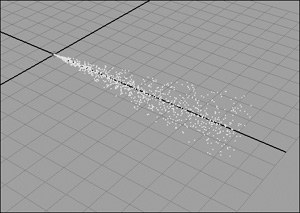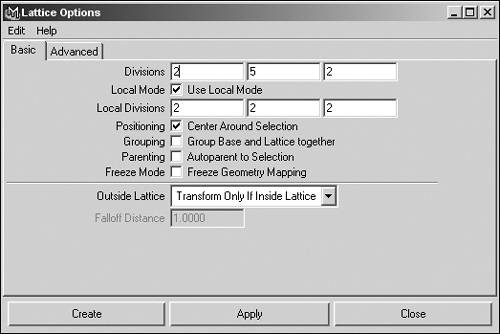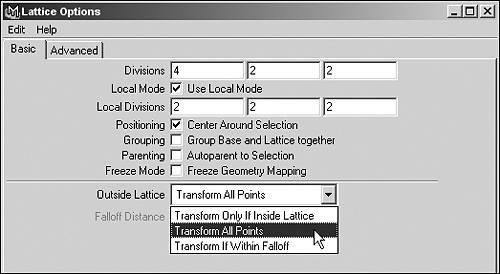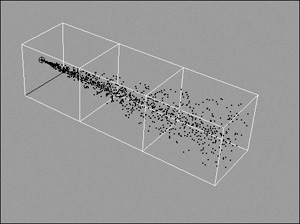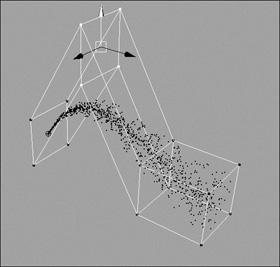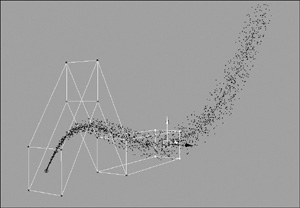Deforming Particles
|
| In all the previous examples we have shown you how to deform surfaces, but you can also deform particles. With deformers, you can control particles in ways that would be difficulteven physically impossible, in some casesusing dynamics. To deform particles:
|
|
